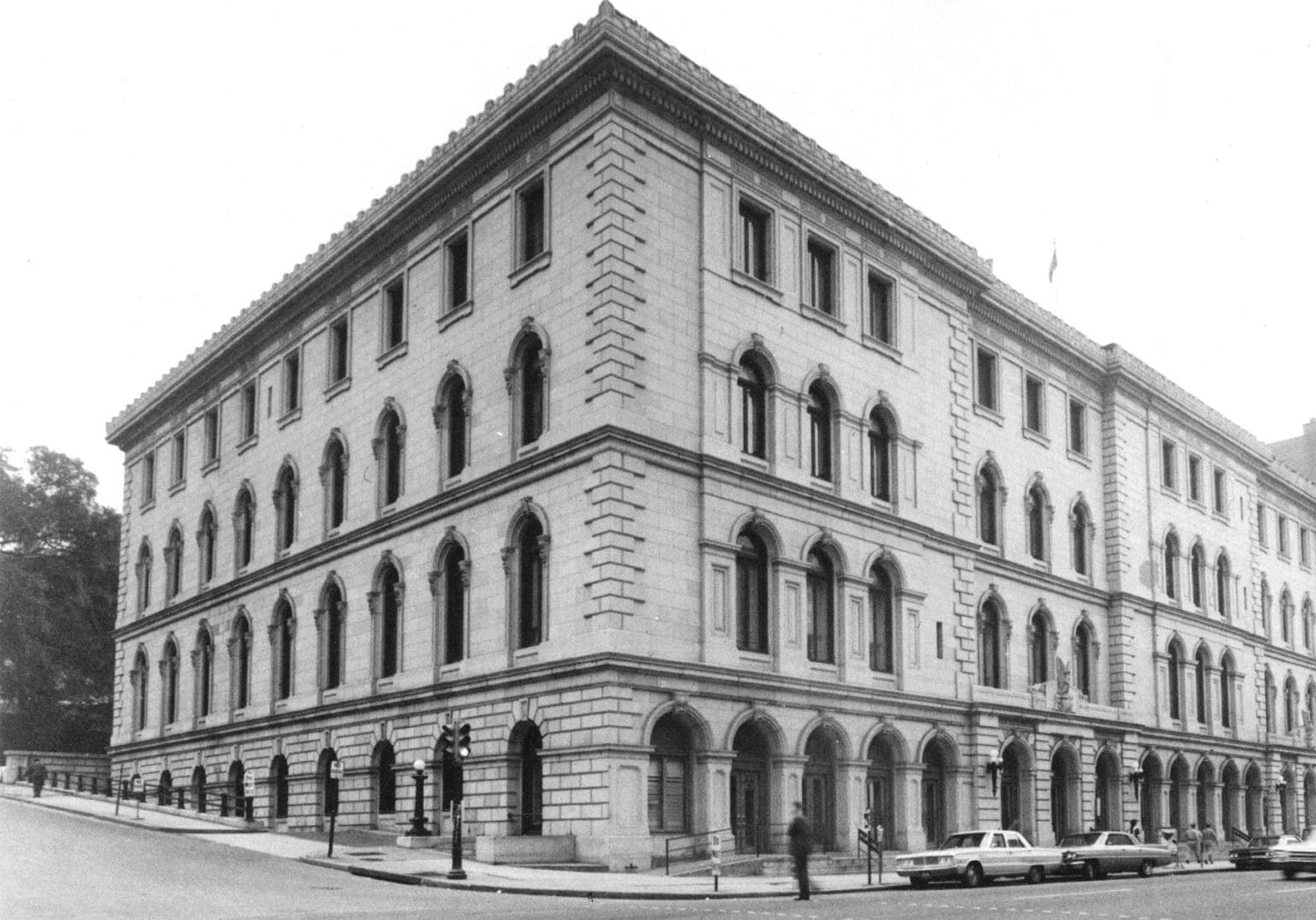RESOURCES
PLACES
United States Courthouse, Richmond, Virginia
The Davis v. County School Board of Prince Edward County case was presented at the U.S. District Court in Richmond—today known as the Lewis F. Powell Jr. United States Courthouse—because of the structure of the federal judicial system and the political realities of the time. Although the events at the heart of the case took place in Farmville, Virginia, the U.S. District Court for the Eastern District of Virginia, based in Richmond, held jurisdiction over Prince Edward County.
Constructed between 1855 and 1858, the building was originally designed as a U.S. Custom House, Post Office, and Courthouse by architect Ammi B. Young. It exemplifies the Italianate architectural style and has undergone several expansions, notably in 1889, 1912, and 1932, to accommodate growing federal functions. Remarkably, it was one of the few structures in Richmond’s historic core to survive the devastating fire of 1865 during the Civil War.The federal courts in Virginia were highly centralized, and cases with potentially broad constitutional implications—especially those involving challenges to Virginia’s public institutions—were often heard in Richmond. This venue also reflected the state’s strategy of controlling the legal fallout of civil rights challenges by keeping such cases within jurisdictions perceived as sympathetic to segregationist policies.
The three-judge panel that heard the Davis case in Richmond included Judge Albert Vickers Bryan, who was known for his conservative judicial philosophy. His courtroom became a focal point for early federal litigation challenging Jim Crow segregation in schools. The decision rendered there in 1952 upheld the doctrine of “separate but equal,” reinforcing Virginia’s segregated school system—at least temporarily—by stating the plaintiffs had not shown they were harmed by segregation.
Thus, the courthouse became a stage not only for legal argument but also for the broader ideological battle over civil rights in Virginia. Its involvement in the Davis case placed it at the epicenter of the legal resistance to desegregation—until the case was ultimately overturned as part of the U.S. Supreme Court’s 1954 ruling in Brown v. Board of Education, declaring school segregation unconstitutional nationwide.
